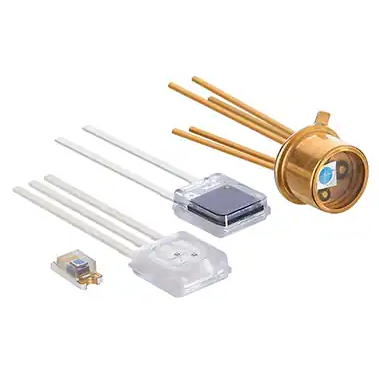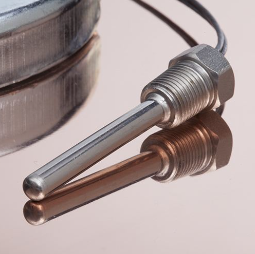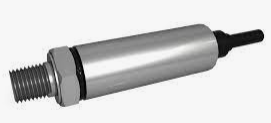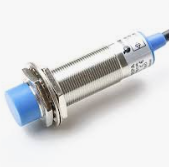What are Sensors: Types, Application, Working
This post will tell you: What are Sensors: Types, Application, Working

Catalog
1.Introduction
2.What are Sensors?
3.How sensors work?
4.Where they can be used?
5.Types of Sensors
6.Application of Sensors
7.Conclusion
1.Introduction:
In today’s increasingly connected world, smart technology has become an integral part of our daily lives. From smartphones to smart homes, these devices rely on sensors to gather information from the physical world. Sensors play a crucial role in converting physical quantities into electrical signals, enabling devices to interact with and respond to their environment. In this article, we will explore the concept of sensors, their types, and their wide-ranging applications.
2.What are Sensors?
Sensors are electronic devices designed to detect and measure physical quantities or environmental conditions. They act as the interface between the physical world and the digital realm, converting real-world phenomena into electrical signals that can be processed and analyzed by electronic systems. Sensors are the building blocks of many technological advancements, enabling devices to perceive, monitor, and respond to changes in their surroundings.
3.How Sensors Work?
Sensors work by detecting and measuring physical quantities or environmental conditions and converting them into electrical signals. The basic principle behind sensor operation varies depending on the type of sensor, but the general process involves the following steps:
Sensing: The sensor’s sensing element or probe interacts with the physical phenomenon it is designed to detect. For example, a temperature sensor’s probe measures the heat energy present in its surroundings.
Transduction: The sensor’s transducer converts the physical quantity into an electrical signal. This conversion can occur through various mechanisms, such as changes in resistance, capacitance, voltage, or current. For example, a pressure sensor’s transducer may change its resistance in response to applied pressure.
Signal Conditioning: The electrical signal produced by the transducer is typically weak or needs to be adjusted for further processing. Signal conditioning circuits amplify, filter, or modify the signal to make it suitable for accurate measurement or analysis.
Conversion and Processing: The conditioned electrical signal is converted into a digital format for processing by microcontrollers, computers, or other electronic systems. This conversion may involve analog-to-digital conversion (ADC) to represent the signal digitally.
Interpretation and Output: The processed signal is then interpreted by the electronic system based on predefined algorithms or calibration data. The result is used to determine the measured quantity or trigger appropriate actions. The output can be displayed on a screen, stored in memory, or used to control other devices.
4.Where Sensors Can Be Used:
Sensors have a vast range of applications across various industries and domains. Here are some common areas where sensors are used:
Consumer Electronics: Sensors are found in smartphones, tablets, fitness trackers, and smart home devices. They enable functions such as touchscreens, motion detection, ambient light adjustment, and GPS positioning.
Automotive: Sensors play a crucial role in modern cars, enabling functions like engine management, anti-lock braking systems (ABS), airbag deployment, parking assistance, and tire pressure monitoring.
Industrial Automation: Sensors are extensively used in industrial automation to monitor and control processes, ensuring efficiency, safety, and quality control. They enable tasks such as object detection, position sensing, proximity sensing, and temperature monitoring.
Healthcare: Sensors are used in medical devices to monitor vital signs, such as heart rate, blood pressure, and oxygen levels. They enable remote patient monitoring, wearable health technology, and smart medical implants.
Environmental Monitoring: Sensors are employed to monitor and measure environmental conditions, including air quality, water quality, and weather patterns. They help in climate research, pollution control, and disaster management.
Robotics: Sensors are crucial in robotics for tasks like object detection, distance measurement, and navigation. They provide robots with the ability to perceive and interact with their environment.
Aerospace and Defense: Sensors are used in aircraft, satellites, and military applications for navigation, guidance, surveillance, and target tracking.
Energy Management: Sensors are used in energy management systems to monitor and control energy consumption, optimizing efficiency and reducing waste.
Agriculture: Sensors are used in precision farming to monitor soil moisture, temperature, humidity, and crop health. They enable efficient irrigation, pest control, and yield optimization.
Smart Cities: Sensors are deployed in urban environments to monitor traffic flow, air quality, waste management, and public safety.
These are just a few examples of the wide-ranging applications of sensors. As technology continues to advance, sensors are being integrated into more devices and systems, enabling smarter and more efficient solutions across various industries.
5.Types of Sensors:
Sensors come in various types, each designed to detect specific physical properties. Here are some common types of sensors:

Temperature Sensors: These sensors measure changes in temperature and are widely used in climate control systems, industrial processes, and weather monitoring.

Pressure Sensors: Pressure sensors detect changes in pressure and find applications in automotive systems, aerospace, and medical devices.

Proximity Sensors: Proximity sensors detect the presence or absence of an object within a certain range. They are used in robotics, automation, and touchless interfaces.

Light Sensors: Light sensors, including photodiodes and phototransistors, measure light intensity and are found in cameras, automatic lighting systems, and solar panels.
Motion Sensors: Motion sensors detect movement and are commonly used in security systems, gaming consoles, and automatic doors.
Accelerometers: Accelerometers measure acceleration and are used in smartphones, fitness trackers, and navigation systems.
Gas Sensors: Gas sensors detect the presence and concentration of gases in the environment. They are crucial in industrial safety, air quality monitoring, and gas leak detection.
6.Applications of Sensors:
Sensors have a wide range of applications across various industries. Here are some notable examples:
Healthcare: Sensors are used in medical devices to monitor vital signs, such as heart rate, blood pressure, and oxygen levels. They enable remote patient monitoring, wearable health technology, and smart medical implants.
Automotive: Sensors play a critical role in modern cars, enabling functions such as anti-lock braking systems (ABS), airbag deployment, parking assistance, and tire pressure monitoring.
Environmental Monitoring: Sensors are employed to monitor and measure environmental conditions, including air quality, water quality, and weather patterns. They help in climate research, pollution control, and disaster management.
Industrial Automation: Sensors are extensively used in industrial automation to monitor and control processes, ensuring efficiency, safety, and quality control. They enable predictive maintenance, robotics, and smart factories.
Smart Homes: Sensors are integral to smart home systems, enabling functions such as motion-activated lighting, temperature control, security monitoring, and energy management.
7.Conclusion:
Sensors are the backbone of modern technology, enabling devices to interact with the physical world. They convert real-world phenomena into electrical signals, allowing for data collection, analysis, and automation. With advancements in sensor technology, we can expect further integration of sensors in various domains, leading to smarter, more efficient, and interconnected systems. Whether it’s in healthcare, automotive, environmental monitoring, or everyday consumer devices, sensors continue to revolutionize our lives and pave the way for a more intelligent future.

Frequently Asked Questions


















